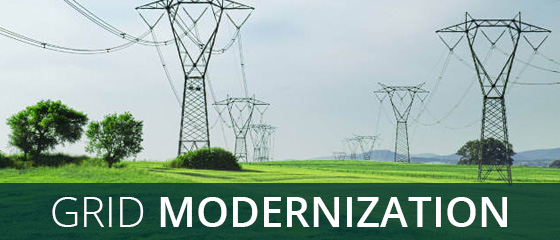 Vice President of Consulting Services, Jeremy Laundergan, contributes an article to T&D World covering the latest Grid Modernization efforts in Hawaii.
Vice President of Consulting Services, Jeremy Laundergan, contributes an article to T&D World covering the latest Grid Modernization efforts in Hawaii.
Click here to read the full article.
“Many labels are being used to describe the technical evolution of electric utilities as multiple simultaneous changes are occurring across the industry.
- “Smart Grid” is a term that initially tried to encompass a more customer-interactive utility — with smart meters functioning as a new customer interface providing more information to both the utility and the customer.
- Distributed Energy Resources (DER) include the demand side management (DSM) of energy efficiency, demand management and demand response, as well as distributed generation (DG) and storage, resulting in more customer interaction with their utility.
- “Transactive energy” envisions a future where customers with DER can respond to utility and grid needs in exchange for compensation – essentially a potential model for the dispatch of DSM resources and associated financial settlement.
- The relatively new term in this list is “Grid Modernization,” which recognizes that grid infrastructure changes and upgrades are needed to support the envisioned customer interactive DER model in the future.
At the end of August 2017, the Hawaiian Electric Companies (Hawaiian Electric, Maui Electric and Hawai‘i Electric Light) published their Grid Modernization Strategy with input from both customers and stakeholders. Hawaii has seen explosive growth in distributed generation photovoltaic (DG-PV) systems with nearly 80,000 privately owned rooftop solar systems pushing electricity onto the grid. The combination of utility-scale and customer-owned renewable resources served 26.5% of the Hawaiian Electric Companies’ customer electricity needs in the second quarter of 2017. To progress even further, the Hawaiian Electric Companies have recognized DER as a necessary component to reach the Hawaii renewable portfolio standard (RPS) mandate of 40% of net electricity sales by the end of 2030; 70% by the end of 2040; and 100% by the end of 2045. Therefore, the GMS proposes an Integrated Grid Planning framework to compare solutions and alternatives to address grid needs. However, this is not simply an engineering exercise. It is a collaborative process involving customers, policymakers, regulators, utility stakeholders and solution providers, all of whom are invested in grid modernization results.


